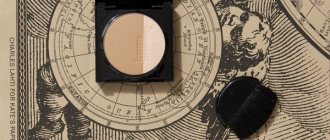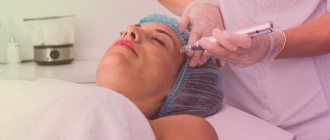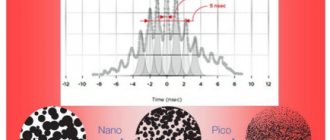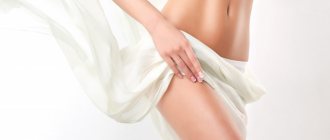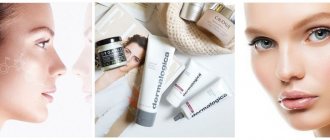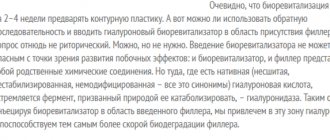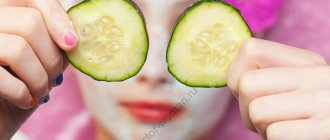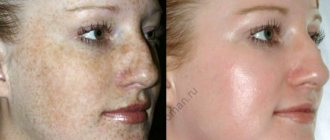PRX-T33 peeling is an innovative cosmetic procedure that combines intense rejuvenating effects that do not require long-term rehabilitation. The technique is universal and applicable to skin of all ages. Allows you to restore youth and beauty to aging skin, prevent the appearance of acne and post-acne, get rid of hyperpigmentation, dilated blood vessels, stretch marks, seborrheic dermatitis, hyperkeratosis. Contains chemical components that act only on the inner layers of the epidermis, without changing the condition of the upper ones. Cosmetologists of the International Hemostasis Clinic carry out the procedure in compliance with all mandatory rules. This minimizes the risk of developing complications after cleaning, so immediately after the session the patient can return to their normal lifestyle without interruption for rehabilitation.
PRX-T33 peeling - what is it?
The PRX-T33 peeling procedure is a delicate medium chemical peeling, which is safe and effective. The composition of the drug used during manipulations includes 3 active components, which, when in contact with the epidermis, have a lightning-fast cleansing effect, without destroying the upper layers of the skin and healthy cells. After the session, the patient does not need rehabilitation, since there is no irritation, redness, peeling or other damage on the face. The technique eliminates dermatological defects on the face and other parts of the body.
Peeling PRX-T33 face, neck (Promotion) RUB 5,000. Peeling PRX-T33 face, neck, décolleté RUB 6,000. Consultation with a cosmetologist, subject to the provision of the service on the day of consultation 0 rub.
All prices Make an appointment
In terms of effectiveness and safety, PRX-T33 peeling can be compared with biorevitalization. After the procedure, natural cell regeneration processes are launched. Blood microcirculation improves, the production of collagen and elastin fibers is stimulated, the first signs of photoaging disappear, the skin is rejuvenated, becomes radiant, healthy, and moisturized. This method of care is all-season, can be used once for the prevention of skin cosmetic defects, as well as in a course.
Aiginina Maria Sergeevna
Dermatovenerologist, cosmetologist, member of OSEM, Moscow
The power of softness
One of the most effective ways to stimulate cellular and structural renewal of the skin is chemical peeling - a procedure that weakens or even partially destroys the stratum corneum. The result of this effect is a sharp increase in the evaporation of water through the damaged area of the stratum corneum. Living keratinocytes located underneath “feel” that the water in the intercellular spaces is moving towards the surface of the skin faster than usual - this serves as a signal to the cells that the barrier function of the stratum corneum has weakened and that it is necessary to quickly “close” the gap in barrier. Keratinocytes at all stages of their development in all layers of the epidermis begin to move:
- granular keratinocytes actively release the contents of lamellar granules into the intercellular space, from which the lipid barrier of the stratum corneum begins to form, and they themselves turn into corneocytes (horny scales) ;
- keratinocytes of the stratum spinosum more actively synthesize and accumulate precursors of stratum corneum proteins (keratohyalin, filaggrin, etc.) and lipids, from which the lipid barrier will subsequently be built, as well as specific enzymes necessary for the formation of the stratum corneum during the process of keratinization;
- basal keratinocytes rapidly divide, and their daughter cells break away from the basement membrane and begin to move upward.
The stronger the damage, the more active the regeneration process is and the more pronounced the stage of inflammation in it. Inflammation is both the strength and weakness of peeling. On the one hand, it promotes restoration and structural renewal of the skin, which improves its appearance. On the other hand, it can provoke too much oxidative stress with such unpleasant consequences as long-term irritation and/or the appearance of post-inflammatory pigment spots. Therefore, in the case of highly sensitive reactive skin, in the presence of rashes (including acne), as well as post-acne pigment spots, it is necessary to choose a peeling that will not cause a strong inflammatory reaction. And at the same time, peeling should still be effective in terms of stimulating the renewal of the skin and stratum corneum. Is this possible without significant damage?
Until recently, the answer to this question was rather negative, and there was an opinion that “the more you exfoliate, the brighter the result.” Unfortunately, with this approach, not only the radiance of refreshed skin could be bright, but also the spots. High risks of adverse events, unpleasant (even pain) sensations during the procedure, severe discomfort and the need for rehabilitation in the post-procedure period have become the reason for the search for formulations that stimulate skin renewal effectively, but with minimal inflammation. We present one of these new developments - peelings of the KPLUS series - in this publication.
The “heart” of KPLUS peels is a complex of mandelic and kojic acids
At the moment, two products have been tested in the KPLUS peeling series - KPLUS soft and KPLUS strong . Both have a laconic composition of 5 components, 3 of which (water, propylene glycol and xanthan gum) form the gel base, and 2 (mandelic and kojic acids) are the active principle. The difference between the drugs is in the concentration of active substances and pH level (see table).
Table. Prescription differences between KPLUS drugs
| KPLUS soft | KPLUS strong | |
| Mandelic acid,% | 2 | 6 |
| Kojic acid, % | 3 | 6 |
| pH | 2,5–3,0 | 2,0–2,5 |
At first glance, the difference is small. Nevertheless, it is enough for the drugs to differ in the strength of their effect on the skin. This is reflected in the name of the drugs: KPLUS soft promotes gentle exfoliation of superficial horny scales, KPLUS strong works to the entire depth of the stratum corneum and causes stronger exfoliation.
However, the effects of KPLUS on the skin include not only direct peeling - weakening of the bonds of horny scales and their accelerated desquamation, but also a number of other interesting and very useful ones. They are associated with selected active substances and are explained by the specifics of their chemical nature and biochemical interaction with cells.
Mandelic acid
Mandelic acid is the first representative of fatty aromatic hydroxy acids. Its molecule contains an aromatic ring and an alcohol group, which makes mandelic acid somewhat similar in chemical properties to phenol ( Fig. 1 ). It, like phenol, is slightly soluble in water and well soluble in polar organic solvents, and when it encounters proteins it causes their denaturation by breaking intramolecular disulfide bonds. But if in the phenol molecule the alcohol group –OH is attached directly to the aromatic ring, then in mandelic acid it is attached through the intermediate hydrocarbon link –CH2–, which significantly weakens its reactivity towards proteins and increases safety [1].
Once on the skin, mandelic acid reacts with all proteins that it encounters on its way. For example, with the protein components of the membranes of microorganisms, causing irreversible damage and cell death. Even before the discovery of antibiotics, this acid in the form of ammonium and calcium salts was widely used to treat urinary tract infections [2] and is still used today [3]. Unlike antibiotics, mandelic acid is an antiseptic because it affects all microorganisms with which it comes into contact. This property is especially useful for acne, a chronic dermatosis in which changes in skin microflora and abnormal growth of anaerobic cutibacteria acne are observed. Mandelic acid easily penetrates into the sebaceous glands filled with lipophilic sebum, where cutibacteria live, and reduces their numbers [4, 5].
Denaturation of the protein components of corneodesmosomes caused by mandelic acid weakens the adhesion of horny scales and facilitates their desquamation. This is the basis for the rapid exfoliating effect of this substance. Thus, in its peeling mechanism of action, mandelic acid is closer to the group of keratolytics (which include phenol, resorcinol, salicylic acid) than to the group of acid peels based on alpha hydroxy acids (AHA), the action of which is based on reducing the pH of the stratum corneum.
An improvement in the biomechanical properties of the skin (primarily elasticity) was shown after 4 weeks of use of skin care products with mandelic acid (in the morning - a product with 6% mandelic acid, in the evening - with 4%) [6]. There is probably an indirect effect on fibroblasts, since mandelic acid itself does not reach the dermal layer and does not directly affect its cells. However, fibroblasts can receive signaling molecules that release activated keratinocytes in the epidermis, and fibroblasts respond to these signals by increasing collagen synthesis.
As a peeling agent, mandelic acid is relatively weak. To achieve pronounced peeling of the skin, its concentration in mono-compositions must be quite high - there are peeling preparations on the market where the mandelic acid content reaches 40%. Here lies the danger: although mandelic acid is a low-toxic substance, in concentrated form it is a rather caustic substance and can cause skin burns, and at a concentration of 60–75% it is a skin irritant - if it comes into contact with the skin, it causes severe irritation, redness and blistering. . For this reason, monopeelings based on mandelic acid are becoming less and less common, but there are many different combination formulations on the market, where mandelic acid is combined with other biologically active substances and peeling agents. They are selected depending on the main tasks facing these compounds.
In particular, the combination of mandelic acid with kojic acid is indicated for reactive skin prone to inflammation and post-inflammatory pigmentation. The explanation for this lies in the nature of kojic acid.
Kojic acid
Kojic acid, an organic compound, is a hydroxyl derivative of γ-pyrone (keto derivative of pyran) ( Fig. 2 ). The name of the acid is of Japanese origin. Kojic acid was first isolated in 1907 by Japanese professor Kendo Saito from the products of fermentation of boiled rice by special molds (Japanese koi) used for the production of sake. Kojic acid has a fairly high solubility in water, but in aqueous solutions it behaves as a monobasic acid of very low strength.
Kojic acid has bactericidal, insecticidal and fungicidal properties, but these are not the main reason for its use in skin care cosmetics. It turned out that kojic acid inhibits tyrosinase, a key enzyme in melanin synthesis in melonocytes [7]. This circumstance, coupled with a good safety profile, has made it one of the most popular depigmentants in modern cosmetics [8].
To realize its depigmenting potential, kojic acid must reach the melanocytes, which are located at the level of the basal keratinocytes, that is, deep. It is difficult for kojic acid to pass through the intact stratum corneum - although it is small in size, it is water soluble, which limits its diffusion through the lipid-filled spaces between corneocytes. Kojic acid needs helpers - transdermal carriers or enhancers that weaken the stratum corneum [9]. The latter includes mandelic acid, which loosens the stratum corneum and makes it more permeable to water-soluble substances.
The effective therapeutic concentration of kojic acid in skin care products that remain on the skin for a long time does not exceed 4% (on average about 1%). In peelings, the contact time of which with the skin is calculated in minutes, the kojic acid content can reach 6%.
Does pH matter?
Of course, if we are talking about acid peels based on water-soluble AHAs. Let us recall that these peels sharply change the pH gradient through the stratum corneum, which leads to disruption of the enzymes operating at different depths, namely:
- proteolytic enzymes in the middle and at the very surface of the stratum corneum, splitting corneodesmosomes and ensuring timely desquamation of horny scales;
- enzymes at the border of the granular and stratum corneum, involved in the processes of keratinization (conversion of a keratinocyte into a corneocyte) and the formation of the lipid barrier of the stratum corneum.
Enzymes are very sensitive to the pH of the environment, and a sharp change in this parameter leads to a malfunction in their work. We see the consequences of shock acidification in the form of peeling a few days after the acid peeling procedure - the skin tends to quickly shed irregular horny scales, the same ones that enzymes worked on to create at the time of acid shock.
But in KPLUS . Mandelic acid, although formally related to AHA, in its chemical properties is much closer to keratolytics - phenol derivatives, and the mechanism of its keratolytic action does not depend on pH. The depigmenting activity of kojic acid is also in no way related to the pH of the drug.
However, both of these substances, although weak, are acids that, when dissolved in water, naturally acidify it. In principle, a neutralizer could be added to raise the pH to physiological values (5.0–5.5). However, the developers did not do this, rightly considering that the acidified pH would contribute to the weakening of the stratum corneum along with the main keratolytic effect of mandelic acid.
Clinical effects, indications and contraindications for KPLUS peels
KPLUS preparations do not injure the stratum corneum, but delicately change its structure, making it looser and better permeable - both for evaporating water and for kojic acid.
- An increase in TEWL stimulates cellular renewal of the epidermis as a whole and the stratum corneum as part of the epidermis. The consequence of this will be the alignment of the microrelief, the alignment of fine wrinkles, and the improvement of skin texture .
- Kojic acid, which penetrates under the stratum corneum, reaches melanocytes and reduces their synthetic activity. As a result , pigment spots lighten and the overall skin tone evens out .
And all this WITHOUT inflammation! That is why KPLUS can be used even in the presence of inflammatory elements of acne and on skin prone to irritation and inflammation.
In addition to traditional indications for superficial chemical peels, the KPLUS is especially indicated in situations such as:
- inflammatory acne of mild to moderate severity;
- post-acne with post-inflammatory pigmentation;
- photodamaged skin with uneven pigmentation, keratosis and signs of inflammation.
Contraindications include intolerance to individual peeling components, ulcers and open wounds.
Practical recommendations
KPLUS peeling procedure is comfortable for the patient, does not require much time and includes 6 steps.
- Cleanse your skin with a cleanser based on your skin type.
- Using a syringe, apply 1.5–2 ml of peeling preparation to the facial skin (Fig. 3A).
- Distribute evenly over the entire surface with massage movements (Fig. 3B).
- Peeling exposure time: 4–8 min.
- Remove the drug with a damp cloth (Fig. 3B).
- Apply a cream with moisturizing, soothing and protective properties according to your skin type.
The procedure can be performed not only on the face, but also on the neck, décolleté, and hands.
KPLUS peels are all-season - the main thing is not to forget to apply a sunscreen with a higher SPF than usual for 3-5 days after the procedure, until the stratum corneum is completely restored. Then you can move on to regular sun protection appropriate to your climate and skin phototype.
Recommended course: 4–8 procedures with an interval of 7–10 days.
Summary
The combination of mandelic and kojic acids in the KPLUS was chosen in order to adapt these peels to work with reactive skin prone to irritation, inflammation and hyperpigmentation. Such a parameter as the level of sebum secretion in this case is not of great importance - after all, both oily and sebum-deficient skin can be inflamed and irritated.
KPLUS peelings gently stimulate cellular renewal of the epidermis without causing inflammation. Ultimately, a new stratum corneum is formed with an improved structure and restored barrier function - the skin becomes more stress-resistant and its sensitivity decreases. In general, this has a positive effect on the appearance of the skin - its texture improves, pigment spots lighten, and the tone becomes more even and bright. This result, so desired by patients, can be achieved with the help of a dermatologically gentle but very effective KPLUS peeling.
KPLUS peelings were created by the Italian company KSURGERY, specializing in the development and production of topical products for the restoration and care of damaged skin, chemical peels and fillers based on hyaluronic acid. All KSURGERY products are distinguished by exceptionally precise compositions and high quality of the materials used. The company's certified production facilities are located in the city of Pisa; pharmaceutical quality raw materials from the world's leading suppliers are used for production, and all production stages - from the purchase of raw materials to packaging of the finished product and storage in our own warehouses - are strictly controlled. And although KSURGERY is a relatively young company (it celebrated its 10th anniversary in 2022), its products are already well known on the European market. Now it is presented in Russia.
The article was published in the magazine “Cosmetics and Medicine Special Edition” No. 3/2021
As an advertisement
Literature
- Yevglevskis M, Bowskill CR, Chan CC, et al. A study on the chiral inversion of mandelic acid in humans. Org Biomol Chem 2014; 12(34): 6737–6744.
- Mandelic acid. Wikipedia. https://ru.wikipedia.org/wiki/Almond_acid#cite_ref-B_1-1
- Xia M., Yang M., Wang Y., et al. dl-Mandelic acid exhibits high sperm-immobilizing activity and low vaginal irritation: A potential non-surfactant spermicide for contraception. Biomed Pharmacother 2020; 126:110104.
- Kontochristopoulos G., Platsidaki E. Chemical peels in active acne and acne Clin Dermatol 2017; 35(2): 179–182.
- Chen X., Wang S., Yang M., Li L. Chemical peels for acne vulgaris: a systematic review of randomized controlled trials. BMJ Open 2018; 8(4): e019607.
- Jacobs SW, Culbertson EJ Effects of Topical Mandelic Acid Treatment on Facial Skin Viscoelasticity. Facial Plast Surg 2018; 34(6): 651–656.
- Singh BK, Park SH, Lee HB, et al. Kojic Acid Peptide: A New Compound with Anti-Tyrosinase Ann Dermatol 2016; 28(5): 555–561.
- Searle T., Al-Niaimi F., Ali F. The top 10 cosmeceuticals for facial hyperpigmentation. Dermatol Ther 2020; 33(6): e14095.
- Saeedi M., Eslamifar M., Khezri K. Kojic acid applications in cosmetic and pharmaceutical preparations. Biomed Pharmacother 2019; 110:582–593.
Peeling composition PRX-T33
PRX-T33 is a product for deep, delicate skin cleansing, created by the Italian company WIQOmed. The uniqueness of the drug lies in its composition, which includes three active components that act on the deep layers of the epidermis without damaging the upper ones.
Trichloroacetic acid
The concentration of trichloroacetic acid in the drug varies between 30 - 33%. This is one of the main components of the PRX-T33 peel. In addition to nourishing epidermal cells, the substance promotes:
- deep cleansing of pores from excess sebum, dirt, dust, dead skin particles;
- destruction of pathogenic microflora, which is the main cause of the progression of inflammatory processes;
- increasing elasticity and firmness.
Hydrogen peroxide
The concentration of hydrogen peroxide in the drug reaches 3%. The active substance has a pronounced antiseptic effect. Upon penetration into the middle layer, peroxide completely destroys the bacterial infection, saturates the epidermal cells with oxygen, enhances receptor sensitivity, cleanses the pores of excess sebum and other impurities that cause inflammation and the formation of a rash.
Hydrogen peroxide cleanses the skin by releasing oxygen already contained in the tissues, which, as it moves, removes toxins and pathogenic microflora. With such delicate cleaning, the risks of irritation, redness and peeling are reduced to zero.
Kojic acid
The main task of kojic acid is to make the skin smooth, beautiful, healthy, radiant, even. The regulation of the shade of the epidermis by this active component is ensured by normalizing the production of melanin, which, when released in excess, causes the formation of age spots on the skin. In addition to combating hyperpigmentation, kojic acid also eliminates the following defects:
- acne marks;
- shallow scars, scars, stretch marks;
- allergic redness;
- freckles, birthmarks.
The best drugs for pigmentation
You can buy a cream for age spots on the face at a pharmacy or at a store that specializes in selling beauty products. Good pharmaceutical preparations include salicylic, heparin and zinc ointments. They eliminate not only darkening, but also acne, irritation, and inflammation.
Pharmacy whitening products are divided into four categories:
- hormonal. Helps remove age spots caused by hormonal imbalance;
- vitamin. If the problem is caused by a lack of nutrients, these drugs should be used;
- organic. This cream for age spots on the body and face will not only help visually eliminate the dark spot, but will also moisturize and relieve inflammation;
- on a natural basis. Made exclusively from natural ingredients.
It is impossible to single out the most effective cream for age spots on the face: firstly, there are many similar drugs, and secondly, it is worth taking into account individual tolerance. It is better to buy a cream for facial pigmentation at a pharmacy than from sellers on the Internet. Pharmacy products are certified, the consumer will not buy potentially dangerous substances of dubious quality.
Benefits, peeling mechanism of action
The main advantage of the technique is tangible effectiveness and an easy recovery period after the procedure. Chemical cleansing can be used for any skin type, it is painless, and is not tied to a specific time of year. Other advantages include:
- Gentle effect on the skin, eliminating the appearance of irritation, redness, peeling, and allergic reactions.
- Severe dermatological problems can be completely resolved in just a few sessions.
- There are no restrictions related to the age characteristics of the patient’s body.
- The procedure is safe and there are no side effects, provided that the rules of care after chemical cleaning are followed.
- The technique is suitable for people who are contraindicated for injection or other invasive procedures for rejuvenation and restoration of the skin.
- Short duration – 15 – 20 minutes.
What kind of substance?
Kojic acid is an effective remedy whose action is aimed at whitening the skin. The acid is obtained from mushrooms growing in Japan: Aspergillus, Aerobacter and Penicillum; it is one of the components of fungal metabolism. It is actively added to many cosmetic whitening creams.
By its nature, the acid appears as a discolored crystalline powder that is not resistant to water. It is able to stop the process of melanin production. If you look at the composition of such creams, you can see that the amount of acid does not exceed 4%. The thing is that this substance can cause an allergic reaction, and a concentration of more than 4% will cause irritation and skin rashes.
Kojic acid is unstable to daylight and degrades quite quickly if not stored properly.
Indications for use
Cosmetologists at the International Hemostasis Clinic recommend PRX-T33 peeling for patients whose skin has pronounced age-related defects:
- hyperpigmentation;
- decreased tone and elasticity;
- wrinkles;
- sick complexion;
- dryness, flaking.
After a course of chemical peeling, middle-aged clients will get rid of the following dermatological problems:
- hyperkeratosis;
- seborrheic dermatitis;
- chloasma;
- pigmentation not associated with age-related skin aging: birthmarks, freckles;
- enlarged pores, dysfunction of the sebaceous glands;
- comedones, acne, blackheads;
- shallow scars, scars, stretch marks;
- small expression wrinkles.
The PRX-T33 peeling procedure, carried out by cosmetologists of the International Hemostasis Clinic, will return youth, elasticity, beautiful appearance and health to the skin, completely transforming the client’s face.
Is Kojic Acid Safe?
Before prescribing and using products containing kojic acid, it is important to ensure that they are safe.
An evaluation of kojic acid found that some studies in mice suggested a link to tumor growth when the acid was used in high concentrations. However, this connection was weak, since the substance is absorbed into the bloodstream slowly. It is unlikely that its level and absorption rate would be high enough to cause cancer in humans.
According to the reviewers, available evidence suggests that the use of products containing kojic acid at a concentration of 2% and intended for absorption is considered safe. Expert groups have recognized that kojic acid can be used in the production of cosmetics.
Pure kojic acid is also available, but it is not recommended for application to the skin and should be diluted to a concentration of no more than 4%. The recommended concentration is from 1 to 2%; in this condition, the likelihood of skin irritation is reduced.
It is important to warn patients that attempting to add pure, undiluted kojic acid to creams or lotions will cause skin damage. The best option would be to use ready-made skin lotions and creams that already contain this substance in recommended concentrations.
Efficiency
Medium chemical peeling contributes to the overall improvement of skin health, because after the procedure, hydrobalance, metabolism, microcirculation are normalized, and regeneration processes are activated. After the first visit to a cosmetologist, the results of the technique are obvious:
- The oval of the face is tightened and becomes clear due to the compaction of the deep layers of soft tissue.
- Enlarged pores narrow, the functioning of the sebaceous glands is normalized, oily shine, acne, blackheads, and comedones disappear.
- The tightness and elasticity of the skin increases.
- Pigment spots disappear, skin color becomes beautiful, healthy, radiant.
- The microrelief is leveled, atrophic changes, small and medium wrinkles, and other cosmetic imperfections disappear.
- Shallow scars, cicatrices, and stretch marks are smoothed out.
Content:
- Causes of pigmentation
- How do creams work?
- The best drugs for pigmentation
- List of effective remedies
- Prevention of pigmentation
Pigmentation is a change in skin color, the appearance of brown spots on the face or body.
A change in skin color is not only a visual defect, it will indicate health problems; discuss this issue with your therapist. Even dark spots remove moisture, which leads to premature aging of the skin and the formation of wrinkles. A visual defect can be easily dealt with using a foundation or bleaching agent, but getting rid of brown elements requires a comprehensive approach. It is not enough to buy a cream for age spots at the pharmacy; it is important to know what pigmentation is and for what reasons it appears.
PRX-T33 peeling how many procedures are needed
To calculate the duration of the course, our cosmetologists first assess the general condition of the skin and the severity of cosmetic defects, then decide how many PRX-T33 peeling procedures a particular patient needs to undergo.
If the client has serious skin problems, to solve them it is advisable to undergo 2 - 3 cleansing procedures with breaks between sessions of 5 days. To tighten the oval of the face, smooth out scars and get rid of wrinkles, the cosmetologist will advise you to take a full course of PRX-T33, which consists of 8 - 10 sessions, repeated 2 times a year. The treatment regimen is adjusted taking into account the overall dynamics of improvement in the condition of the skin and the individual characteristics of the body.
Why do age spots and freckles appear?
Skin color is influenced by a special pigment – melanin. Its amount determines the shade of the dermis. Internal changes in the body, as well as external environmental influences, can change the amount of melanin. For example, tan lovers observe a change in the color of their skin after prolonged exposure to the sun or after staying in a solarium. The skin becomes darker and acquires a golden or bronze hue. But with liver diseases, the epidermis turns yellow.
If melanin is produced unevenly, spots appear on the body that are significantly different from the rest of the skin. What can provoke such a pigment disorder?
- Impaired metabolism.
- Liver disorders.
- Changes in hormonal levels due to pregnancy and puberty.
- Skin diseases such as seborrhea, acne, etc.
- Stress.
- Antibiotics.
- Ultraviolet radiation from frequent exposure to the sun or solarium.
- Aging process.
- Malfunction of the gastrointestinal tract.
Kojic acid is an essential component used in cosmetic preparations for skin rejuvenation. Before starting whitening, it is necessary to consult a doctor, since it may be necessary to treat the underlying causes leading to the blemish, and only then proceed with the cosmetic procedure.
Pigment spots are a consequence of external and internal influences. But why do freckles appear? The reason for this skin feature is genetic predisposition. We can say that freckles are a hereditary disease. These people with freckles have pale skin and often (but not necessarily) red hair. The appearance of spots worsens in the spring.
Spots on the face can be of different shades: from light to dark. This depends on the depth of their formation: the closer to the outer layer, the lighter. This factor will influence the method of dermis whitening. Cleaning can be superficial or deep.
Disadvantages of the procedure, side effects
The rejuvenating and restorative technique has its drawbacks, which you need to familiarize yourself with before signing up for a cleansing. Among the most significant are the following disadvantages:
- High cost compared to other procedures that eliminate cosmetic defects and the first signs of skin aging.
- There are restrictions under which mid-cleaning is strictly prohibited.
The risk of complications after correctly performed manipulations is minimal. Side effects occur if contraindications are ignored. Therefore, before a cosmetic procedure, a thorough examination by a cosmetologist is required, who, if necessary, will give a referral for a diagnostic examination in order to timely identify a hidden disease.
Types of skin pigmentation
PHOTOAGING
The most common type of stain. They gain color after summer, lighten in winter, but do not completely disappear from the skin. You could say they often stay for life.
Ultraviolet radiation activates the synthesis of melanocortin, a pituitary hormone that stimulates melanogenesis in melanocytes and keratinocytes.
During photoaging, melanin is present in the form of granules in melanocytes, keratinocytes, dermal macrophages and in the intercellular space.
POST-INFLAMMATORY PIGMENTATION
Occurs in areas with long-term chronic inflammation: post-acne pigmentation, pigment spots after traumatic procedures, laser therapy and peelings.
Typically, this type of spots disappears once the inflammatory process resolves.
PROTECTING SKIN FROM LIGHT
Trigger factors - ultraviolet, blue light emitted by electronic gadgets (TVs, computers, smartphones...)
Since melanin serves as a shield from solar radiation and other types of rays, it is important to remember - in the fight against age spots of any origin, the first rule is to start using a protective cream with mineral SPF (zinc oxide and titanium dioxide) containing BlueLight filters for blue light and to infrared rays.
Contraindications
The use of innovative cleaning products has its own contraindications, which cannot be ignored:
- Allergy to the components of the drug. If your previous experience with using the product was negative, then it is prohibited to use it again. In this case, the cosmetologist will select another drug, having done a preliminary test for an allergic reaction.
- Pregnancy, breastfeeding. In case of any of the mentioned conditions, resorting to cosmetic manipulations related to skin cleansing is not recommended. The effect of active ingredients on the body of a pregnant woman and child has not been fully studied, so cosmetologists do not risk prescribing it to such categories of patients.
- Open wounds, abrasions, purulent skin lesions. First, a treatment regimen is prescribed to get rid of dermatological defects, and only after complete recovery can peeling begin.
- Acne.
- Herpes is in the active stage.
- Decompensated diabetes mellitus.
- Tuberculosis.
- Taking medications that affect blood viscosity.
- Benign and malignant neoplasms. In the presence of tumors of any nature, any external intervention can cause the progression of cancer processes and malignancy of cells.
- Progressive fungal, viral, bacterial diseases.
- Chronic pathologies in the acute stage.
- Rehabilitation after surgery in the area where the cleanser will be applied.
- Mental disorders, including epilepsy.
Skin care after peeling PRX-T33
Immediately after the session, the treated areas become dehydrated, dry, and sensitive. However, after 2 – 3 hours the discomfort disappears. To consolidate the result of chemical cleaning and prevent the development of complications, after the procedure it is recommended to follow these simple rules:
- Protect treated areas from direct sunlight, exposure to high or low temperatures, and strong winds.
- For washing, use soft, hypoallergenic foam. Avoid soap and other aggressive products completely.
- In the first days, apply a restorative cream selected by a cosmetologist. Before going outside, apply sunscreen to your face.
- Do not visit the swimming pool, solarium, bathhouse, sauna.
- Drink more fluids.
- In the first 5–10 days, avoid decorative cosmetics.
Rules for choosing an effective lightening product for the face
- Buy only products from professional cosmetic brands . Cheap drugs and widely available products will not contain the necessary substances/concentrations for effective depigmentation.
(the advice is banal, but it will allow you to avoid unnecessary waste of money and time)
- Use preparations with a complex composition of lightening ingredients .
There are many mechanisms that bring pigment cells into a state of hyperproduction of the melanin pigment, and it is also necessary to block these processes in a comprehensive manner. Look for products with a composition of brightening ingredients that work at different points of application and enhance each other's effects.
- Remember that your daily care should at least include the use of a lightening cream + sunscreen !
Free consultations are available from leading cosmetologists of the Russian representative office of DermaQuest and Circadia.
What other effects does acid have on the skin?
Whitening is the main property of kojic acid. But, in addition to this, the substance can have the following effects on the epidermis:
- Slowing down the production of the enzyme tyrosinase.
- Prevents the proliferation of microbes.
- Peeling – removal of the keratinized skin layer.
- Forms an ionic bond with iron, necessary for the formation of melanin.
- Antioxidant action.
- Long lasting whitening effect.
- Reduces the risk of sunburn.
Where is it contained?
Kojic acid is used in skin care cosmetics in concentrations of 1 - 4 percent. It is recommended to start at two percent coverage or lower, especially for products that stay on the skin surface and do not wash off.
Present in the list of components of cosmetic products for the face and body:
- Creams;
- Serums;
- Lotions;
- Powders;
- Face masks;
- Oils for face and body;
- Soaps and cleansers.
As a rule, it is poorly absorbed, so it remains on the surface of the skin. It remains with certain complexes, for example, in serums and lotions. And as part of products for cleansing the face, it is washed off.
How to use, dosage
Kojic acid included in skin care products is usually applied daily, although this depends on the form, amount, and accompanying ingredients. For those new to use, it is advisable to start by using it several times a week in low concentrations, no more than 2 percent.
Natural emulsions of the complex consist of natural ingredients. We combined ancient treatment recipes with honey derivatives and medicinal herbs. The effectiveness is confirmed by ancient documents and deserved popularity among consumers.
Some cosmetic products that work to lighten pigmentation contain kojic acid, glycolic acid and hydroquinone. It's good to take serum blends or facial oils with vitamin C to boost your anti-aging antioxidant levels.
Be sure to purchase from a reputable brand and start with a small area of skin to rule out any adverse reactions.
